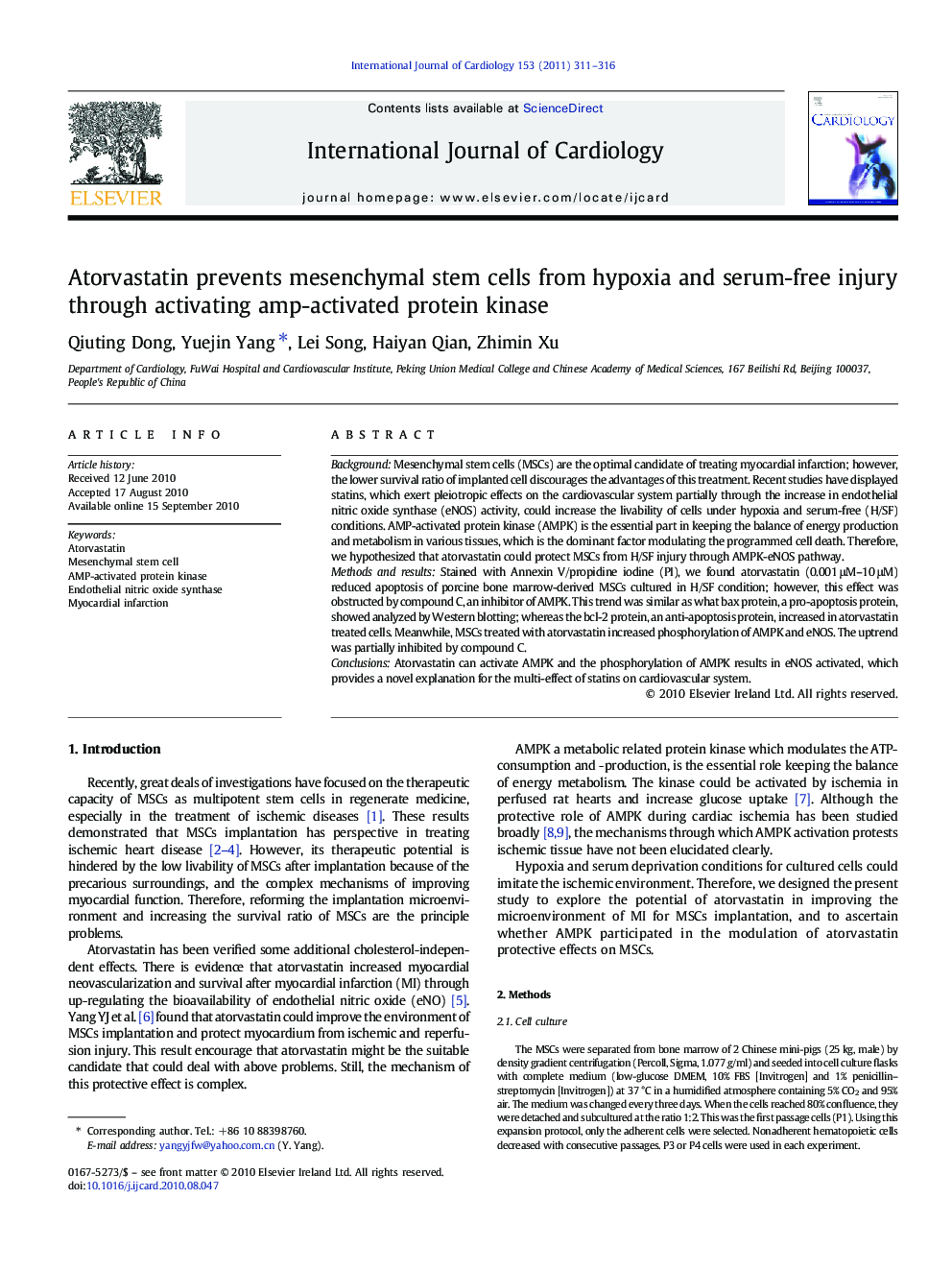| Article ID | Journal | Published Year | Pages | File Type |
|---|---|---|---|---|
| 2930427 | International Journal of Cardiology | 2011 | 6 Pages |
BackgroundMesenchymal stem cells (MSCs) are the optimal candidate of treating myocardial infarction; however, the lower survival ratio of implanted cell discourages the advantages of this treatment. Recent studies have displayed statins, which exert pleiotropic effects on the cardiovascular system partially through the increase in endothelial nitric oxide synthase (eNOS) activity, could increase the livability of cells under hypoxia and serum-free (H/SF) conditions. AMP-activated protein kinase (AMPK) is the essential part in keeping the balance of energy production and metabolism in various tissues, which is the dominant factor modulating the programmed cell death. Therefore, we hypothesized that atorvastatin could protect MSCs from H/SF injury through AMPK-eNOS pathway.Methods and resultsStained with Annexin V/propidine iodine (PI), we found atorvastatin (0.001 μM–10 μM) reduced apoptosis of porcine bone marrow-derived MSCs cultured in H/SF condition; however, this effect was obstructed by compound C, an inhibitor of AMPK. This trend was similar as what bax protein, a pro-apoptosis protein, showed analyzed by Western blotting; whereas the bcl-2 protein, an anti-apoptosis protein, increased in atorvastatin treated cells. Meanwhile, MSCs treated with atorvastatin increased phosphorylation of AMPK and eNOS. The uptrend was partially inhibited by compound C.ConclusionsAtorvastatin can activate AMPK and the phosphorylation of AMPK results in eNOS activated, which provides a novel explanation for the multi-effect of statins on cardiovascular system.
